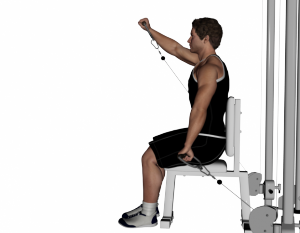The Shoulders
The human shoulder is made up of three bones: the clavicle (collarbone), the scapula (shoulder blade), and the humerus (upper arm bone) as well as associated muscles, ligaments and tendons. The articulations between the bones of the shoulder make up the shoulder joints.The shoulder is a advanced combination of bones and joints that provide the widest range of motion of any part of the body.
Functions of Shoulder:
The shoulder is the most mobile and versatile joint within the human body. We rely upon our shoulders to help us with both basic and complex movements numerous times throughout the day. Shoulder pain is often among of the most common as well as most frustrating issues for patients. There’s a fine balance between quality and stability within the shoulder that enables us freedom of movement throughout our entire lives, with a smallest quantity of pain and issues. Though, there are several reasons why this fine balance is often upset. The various causes of many shoulder issues can easily be prevented through proper stretching and exercise.
Importance of shoulder exercises:
Shoulder exercises are a great approach to preparing and introducing your body to your normal physical program. Your shoulder is often viewed as one “muscle” or “unit” however, the shoulder, in it’s entirety is comprised of multiple components. The rotator cuff muscles, the rear deltoids, the front deltoids and middle deltoids. Most shoulder workouts do not specifically target each area of the shoulder. Thus, your best option is to use a variety of exercises to work each individual muscle that comprises the shoulder.
Cable Alternating Seated Front Raise
Instructions
• Sit on seat above twin cable pulleys.
• Grasp stirrups on each side.
• Sit upright with arms straight down to each side with palms facing back.
• Raise one stirrup forward and upward until upper arm is well above horizontal.
• Lower and repeat with opposite arm.
• Continue by alternating raises between sides.
Tips for shoulder Exercise:
• Before you begin a shoulder exercise program, talk over with your medical professional, particularly if you’ve had a shoulder accident or a history of shoulder issues.
• Keep in mind that the shoulders or deltoids, are created from three distinct “heads”, the anterior (front), the medial (side) and therefore the posterior (rear). Once you train your shoulders, make sure to train every individual “head”, since all 3 conjure the summation of correct shoulder development. This is often very necessary if you contend as a result of the thickness and development of all 3 heads are instrumental in your motility routines. The shoulders should show definition and striations in spite of the movement you create.
• Fatigue the muscles of the shoulders throughout training. Training the shoulders should be brutal. If you wish to examine growth and definition quickly, train your shoulder muscles till they feel as if “they may fall off”. To fatigue these muscles, concentrate on movements, like Lateral Raises.
• When executing Lateral Raises, make sure to train to the front, sides and rear. This will be troublesome if you’ve already exhausted the shoulders in a previous exercise.
• Do five repetitions for every exercise unless your trainer has requested a distinct variety of repetitions.











